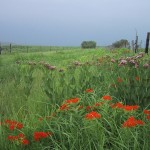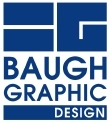Archive for October, 2009
Photographer’s Bible
Posted by baughdesign in Photography on October 12, 2009
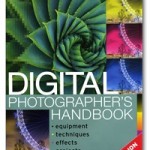 I’ve frequently taught a photo seminar each year at the Backroads Touring – Kansas ‘Flint Hills Stampede’, and it is a most enjoyable session, with up to a dozen budding photographers participating in the class. Beforehand, I’ve encouraged the photographers to study the work of Ansel Adams, as we’re most often engaged in landscape photography … and Adams has long been recognized as the master in this field.
I’ve frequently taught a photo seminar each year at the Backroads Touring – Kansas ‘Flint Hills Stampede’, and it is a most enjoyable session, with up to a dozen budding photographers participating in the class. Beforehand, I’ve encouraged the photographers to study the work of Ansel Adams, as we’re most often engaged in landscape photography … and Adams has long been recognized as the master in this field.
When it comes to an overall reference publication, it’s hard to beat British photographer Tom Ang’s, “Digital Photographer’s Handbook”. For me, this was probably the best $35 I ever spent at the time … to quote DP Expert’s review: “Subjects covered include the technology of cameras and a how-to-choose guide. The essential physics of lenses and their behavior is explained. All aspects of the art are covered, including framing, composition, lighting and subject selection. The post-camera chapters describe all common editing techniques, including cropping, exposure correction, black and white conversion, colour correction, spot removal and other computer manipulations of images. Some of his advice on achieving weird effects is a little esoteric. Scanning, printing, web-sharing and emailing, as well as file storage are covered.
This is an ideal classroom-in-a-book for anyone who wants to progress beyond the point-and-shoot and print-at-Big W stage. Ang’s own photos illustrate the text well. The layout and the clarity of the text are excellent.”
Says it all for me …..!
Gallery Format
Posted by baughdesign in Layout Design, Photography, Web on October 10, 2009
 |
 |
 |
 |
 |
 |
 |
 |
 |
WordPress does not include a ‘table’ tool in its’ tool set, and I needed to show a uniform column and row thumbnail gallery grid within a post. Created a quick 3-row x 3-column table in my favorite web editor, set line depth, cell padding, and dimensions of table. Placed the HTML table code into the post, then uploaded and added individual images into each cell as a linked thumbnail, Thickbox activated.
Embedded Video
Posted by baughdesign in Video on October 10, 2009
Above is an example of a video first authored in QuickTime, then converted to ‘Raw Flash’ .FLV format. I have used this encoding approach rather than dropping a video into YouTube because it provides a much higher degree of control in the areas of image quality, frame rate, and data feed rate.
Not everyone has ultra-high speed broadband, so video content design needs to balance all factors to allow for a quality presentation to a wide viewing audience. You may notice how quickly the video loads, and this is accomplished without the need of a dedicated video streaming web server.
Image File Management
Posted by baughdesign in Photography on October 10, 2009
 The digital camera has become an amazing everyday tool for many of us. I became interested in the technology in the early 90s … the Apple QuickTake 150 digital camera had arrived, one of the first consumer digital cameras. I started using the device to produce “on the fly” operator and user manuals, and no longer had to wait for film to be processed, then scanned. The time-saving utility of the digital camera was readily apparent to me. So too, was its’ disappointing lack of image quality. To my way of thinking back then, the digital camera would never approach the quality of film cameras.
The digital camera has become an amazing everyday tool for many of us. I became interested in the technology in the early 90s … the Apple QuickTake 150 digital camera had arrived, one of the first consumer digital cameras. I started using the device to produce “on the fly” operator and user manuals, and no longer had to wait for film to be processed, then scanned. The time-saving utility of the digital camera was readily apparent to me. So too, was its’ disappointing lack of image quality. To my way of thinking back then, the digital camera would never approach the quality of film cameras.
Obviously, the digital camera did improve, and in ways never imaginable. My once essential OM-1 35mm SLR film camera now sits in permanent storage, while the digital variants are in daily use.
Digital image file management is sometimes an area that isn’t given much thought …. until the photographer gets a “Kodak Moment” frame … and later down the road, the image file isn’t up to snuff. If this has happened to you … here’s some pointers
• Set your camera to the largest file size and image quality. Storage media is inexpensive, and there’s false economy thinking you’ll double or triple the storage by going to a lower quality or resolution.
• After downloading your images, resist opening, viewing and editing the photo set. Instead, make a duplicate folder of the images and then open the copied image files. Place the originals on an inexpensive CD or DVD disk for archival purposes, or “lock” the files where they can no longer be altered.
If your camera has the ability to shoot in RAW mode, these last steps are not necessary, as the RAW (uncompressed) mode is not editable and must be converted to TIFF or JPEG first. Just save the RAW files as archives. However, most cameras, particularly the point & shoot variety, save the image file as a JPEG. The JPEG format employs what is known as “lossy” file compression in order to keep file sizes smaller. This means that data is thrown away with each save, causing a degradation of image quality each time the image is edited and saved.
Having an unaltered original image file may someday be worth its’ weight in gold ….
The Case For Print
Posted by baughdesign in Print on October 9, 2009
We’ve been hearing about it for decades; the paperless office, electronic books, and all information becoming digital. And, we have come a long ways since the early printing press. Why do we even need printing any longer? Two words: Physical Presence
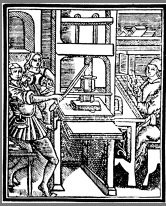 The printed document exists beyond the display screen. It can be read during a power failure. It is tactile and enduring. It does not get switched off. And … if the document has perceived value to the reader, whether it’s a well written letter, a good novel or a store coupon, it may be saved for days, months, or years.
The printed document exists beyond the display screen. It can be read during a power failure. It is tactile and enduring. It does not get switched off. And … if the document has perceived value to the reader, whether it’s a well written letter, a good novel or a store coupon, it may be saved for days, months, or years.
When working with clients who are launching a new web site, product, or marketing campaign, my recommendation is usually to include print media in the mix. The web, TV, and radio are media forms that can sometimes flood the recipient with incredibly rapid bursts of information … that can just as rapidly be forgotten. Print media is the one form of media that can be digested thoroughly by the viewer and at times and places of their own choosing.
Print still endures … and for very good reasons.
Use Of Typefaces
Posted by baughdesign in Opinion, Print, Web on October 9, 2009
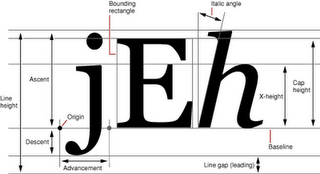 I’ve been around type most of my life. When a young boy, I often watched my father create typefaces by hand. He was the consummate calligrapher, and his talents were sought after by firms all over the country. As an established type and logotype designer, his lessons to me remained clear … type is intended to be read, with little to no need for interpretation.
I’ve been around type most of my life. When a young boy, I often watched my father create typefaces by hand. He was the consummate calligrapher, and his talents were sought after by firms all over the country. As an established type and logotype designer, his lessons to me remained clear … type is intended to be read, with little to no need for interpretation.
So …. it never ceases to amaze, seeing what a mish-mash the use of type has become. Both print & web pages are seemingly being produced by individuals who use high resolution screens and possess 20/20 vision …. and often fail to use type effectively .
Why Do They Do This …… ?
• Authors who place type on dark, gradient, or bitmapped image text blocks, reversed out in white or other hard to read color (how natural-reading is that?).
• Small type. Please …. many of us have corrective lenses, maybe even bi or tri focals. Small type was originally designed to maximize the use of trees/paper, reduce printing costs, or hide the truth in legal documents. With the speed of the internet and the ability to display vast amounts of text in near-time, virtual page display space is practically free (and saves trees!). Why not use that space effectively with font sizes that can be read by all without the need of a magnifier?
• Choice of typefaces. Using decorative or script typefaces as body copy is laborious to read. They were designed to be used as headlines, not text.
Here’s a good rule of thumb. Small amounts of text copy …. sans serif faces such as Arial, Trebuchet, Verdana, or Helvetica all work well. Continuous and long stretches of text, serif faces such as Century Schoolbook, Times, and Palatino have proven themselves over the past century as easy-to-read text. Set type in a size that your older readers will have no difficulty reading. Need examples? Look at magazines and books, and see what typefaces those publishers are using. The selected fonts are there for a reason …. maximum legibility.
Thickbox Gallery
Posted by baughdesign in Layout Design on October 7, 2009
This is an example of a Thickbox gallery. Clicking on either the top or bottom thumbnail will result in the launch of an overlay display window. Navigation is controlled at the bottom if there is more than one thumbnail that has been activated. Clicking on a large image will close the overlay window.
